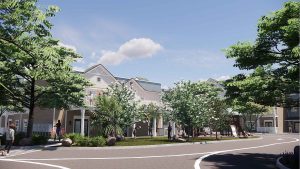
By Elliott Bochstein, RCAC Staff Writer
Rural Community Assistance Corporation (RCAC) and Cabrillo Economic Development Corporation (CEDC) are on a mission to make affordable housing a reality for struggling families in Ventura County, California and the surrounding region. For over three decades, CEDC has partnered with RCAC to create thousands of affordable homes and continues to make a difference through its latest project, the Bryant Street Apartments in Ojai.
Ojai is a charming small town in Ventura County located in a unique east-west valley flanked by the stunning Topatopa Mountains. It is just an hour and a half drive from both Los Angeles and Santa Barbara, near the borderline of California’s central and south coasts. Ojai’s name has its roots in the Chumash Indigenous term for moon, “Awhaý,” and the town is often referred to as the “Valley of the Nesting Moon.” For more than a century, Ojai’s thermal hot springs, ideal climate and purported unique energy have made it a top destination for New Age spiritualists, wellness enthusiasts and Hollywood celebrities.
Today, Ojai is renowned as an easygoing town filled with boutique motels, quaint art galleries and Spanish-revival architecture. Its strict ban on chain retailers in its downtown created a unique environment for local businesses to thrive. Each Sunday, the Ojai Certified Farmers’ Market showcases the town’s organic farming, culinary and craft heritage. Agriculture also plays a significant role in the regional economy, and Ventura County’s Mediterranean climate provides an ideal environment to grow high-quality crops. Despite its small-scale production compared to neighboring agricultural hubs like Oxnard, Ojai’s organic farms produce some of California’s most sought-after fruits like Ojai Pixie tangerines and the subtropical cherimoya.
While Ojai’s “Shangri-La” may appear to be a utopia for some, the reality for tens of thousands of farmworkers in Ventura County is one of exploitation and disenfranchisement. Farmworker labor drives the county’s $2 billion agriculture industry, yet their wages remain shockingly low considering the value they create and the area’s sky-high cost of living. The National Low Income Housing Coalition’s 2022 Out of Reach report reveals that Ventura County residents require an hourly wage of $42.65 to afford a two-bedroom rental at the fair-market rent, an impossible sum for workers who subsist on piece rates or the state minimum hourly wage of $15.50, or less if undocumented. A separate study by local social justice organization CAUSE found that Ventura County residents are among the most rent-burdened in the nation.
Despite their critical role in keeping the region’s fields and orchards green, farmworkers struggle daily with poverty, marginalization, and ironically, food insecurity. This grim situation forces farmworker families to pool their meager earnings and endure overcrowded, often hazardous living conditions in mobile homes, garage studios and granny flats, entangling them in a vicious and often inescapable cycle of poverty and social exclusion.
“It’s always been a pleasure to work with RCAC, and the low interest rates you provide for communities are a major plus.”
– Victoria Brady, Chief Financial Officer, CEDC
RCAC financing helps developers build single and multifamily affordable housing units for low-income families. RCAC’s housing loans allow for short-term acquisition, pre-development, site development and construction of single and multifamily affordable housing. Learn more about RCAC’s Affordable Housing Loan Program
A Champion Emerges: The Birth of CEDC
For nearly 50 years, Cabrillo Economic Development Corporation (CEDC) has ensured dignified housing for farmworkers in Ventura County, and adjacent areas in Santa Barbara and Los Angeles counties. CEDC emerged during a period of widespread labor strife, racist housing covenants and arbitrary mass evictions. In 1975, farmworker families in Cabrillo Village (Saticoy, California) faced eviction from their grower-owned labor camp. Eviction from company-owned housing was not uncommon at the time, as housing contracts often included clauses that permitted immediate eviction in the event of labor disputes or termination.
In response, affordable housing advocate Rodney Fernandez (1945-2011) joined forces with Cabrillo Village’s families and other community organizers to create the Cabrillo Improvement Association (CIA). After a hard battle, CIA secured legal ownership of the Saticoy land as a cooperative in 1976 and began rehabilitating homes, developing housing complexes and initiating business ventures to strengthen its economic base. It was through these people-driven initiatives that the CEDC was officially established in 1981 with Fernandez at its head, which cemented its role as a leading institution dedicated to improving farmworkers’ living conditions.
To date, CEDC has built over 2,000 affordable rental and for-sale housing units, while managing 1,202 affordable rental units in 25 developments. “CEDC has been at the forefront of ensuring dignified housing for farmworkers,” said Miguel Rodriguez, a prominent grassroots activist and current Community Outreach Manager for the Port of Hueneme. “They’ve created a formula through which residents can live in a home that they can be proud of and afford.”
Affordable Housing as a Catalyst for Economic Growth
Despite the urgent need for safe and affordable housing, CEDC often faces opposition from some residents. This “Not-In-My-Back-Yard” or NIMBY opposition frequently stems from deeply ingrained racial and class biases.
“Affordable housing tends to put this concern into people, so they worry about whether their home values will decrease because of affordable housing,” said Victoria Brady, CEDC’s Chief Financial Officer. “But studies show that isn’t true. We need to educate folks about who we are trying to serve.”
Affordable housing initiatives can have major impacts on health outcomes, job satisfaction, productivity and workforce stability. On the other hand, the absence of affordable housing is a systemic failure that undermines long-term economic growth and leads to displacement, homelessness and a range of social problems. Simply put, affordable housing is not just some lofty ideal of charity or compassion – it is a key factor that determines the success or failure of entire local economies.
CEDC shifts the conversation around affordable housing through community outreach and by developing model farmworker communities. The Bryant Street Cabrillo Vistas development in Ojai is a prime example of its approach to high-quality affordable housing. The development comprises two two-story elevator buildings with 50 units, each featuring two- to three-bedroom apartments with modern amenities and eco-friendly facilities. The property also boasts a range of community features to create a comfortable and secure living environment, such as a dining room, meeting room, charging station, community garden, laundry facility, on-site management and maintenance, video surveillance, bike storage and limited access gating.
Financing Housing Justice: RCAC’s Partnership with CEDC
Since 1992, Rural Community Assistance Corporation’s (RCAC) Loan Fund has been CEDC’s dedicated partner, financing an array of projects that promote social justice in the region, one development at a time. Brady praised RCAC’s Loan Fund for providing the $2.28 million loan that made the Bryant Street development possible. “Interest rates are all over the place right now and finding 100 percent financing is crucial to avoid a substantial cash deposit on land parcels,” she explained. “RCAC’s loan gives us the flexibility to use those funds for architecture, soils reports and other types of costs in a predevelopment project.” According to Brady, this approach allows CEDC to “move more quickly on a land purchase” and keep resources available for other types of expenses.
Brady emphasized that RCAC’s user-friendly process and promptness in providing funds make them an exceptional partner. “The staff has always been tremendously helpful and easy to work with,” she said. “It’s always been a pleasure to work with RCAC, and the low interest rates you provide for communities are a major plus.”
RCAC and CEDC’s decades-long partnership is instrumental in providing affordable, dignified housing to low-income communities in Ventura County. Working together to set a new standard for community-centric economic development, the two organizations are laying the foundation of a more equitable, inclusive and vibrant future for the region.
RCAC-financed CEDC projects include:
Village Senior Apartments, Buellton
Village Senior Apartments is a housing project for low-income seniors ages 55 and older in Buellton. The development will feature 50 modern and energy-efficient rental homes for seniors, including a community room, elevator, and private patio/balcony area for each unit. The project also includes a community vegetable garden and utilizes eco-friendly materials. The target rent levels will be set at 30 percent, 45 percent and 50 percent of the area median income.
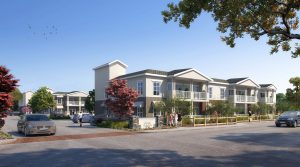
Camino De Salud, Ojai
Camino De Salud is an affordable housing development in the Ojai Valley that will offer 49 supportive housing units just outside the city. The complex features a three-story elevator building with efficiency units, along with amenities like a community garden, charging station, laundry facility, on-site management and maintenance and common area Wi-Fi. Each unit includes safety bars, vinyl flooring, blinds, and in-unit Wi-Fi, along with a range of appliances. The project applied for Low Income Housing Tax Credits at 30 and 60 percent of the area
median income.
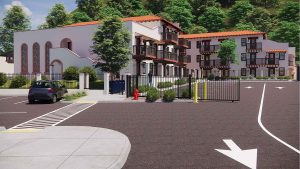
Meta Street Apartments, Oxnard
Meta Street Apartments in Oxnard provides 23 one-, two-, three- and four-bedroom apartments for eligible low-income farmworker families. CEDC and Clinicas del Camino Real are the community partners for the “Building a Healthy Farmworker Community in Oxnard” program, completed in the early 2000s. The program provided affordable housing and improve the health of agricultural workers and their families. Rental assistance is available thanks to United States Department of Agriculture-Rural Development (USDA-RD).
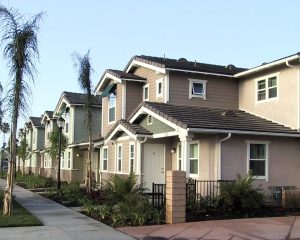
Villa Cesar Chavez Apartments, South Oxnard
Villa Cesar Chavez Apartments in South Oxnard comprises 51 two-, three- and four-bedroom town-home style units for eligible low-income farmworker families. Families pay 30 percent of their monthly adjusted income, and rental assistance is available thanks to USDA-RD.
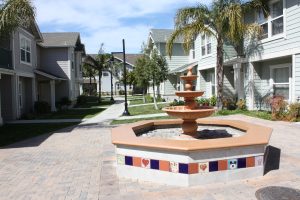
Central Station Townhomes, Fillmore
Central Station Townhomes in Fillmore, California, is a community of 21 two-, three- and four-bedroom homes for farmworker families. RCAC’s Loan Fund provided financing for this development, which includes amenities such as attached or detached garages, barbecue areas, a community room, a computer room and a playground for children. The spacious townhomes are two- or three-story and come with a range of appliances, including a dishwasher and washer/dryer.
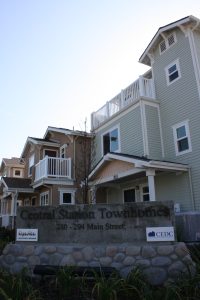
CEDC Headquarters, Ventura
RCAC’s Loan Fund financed CEDC’s corporate headquarters expansion in Ventura. The expansion added 4,000 square feet of office space with 18 offices, a reception area, a kitchen, a lunchroom and a classroom. The remodel included new carpet, paint, roof, landscaping and improved lighting.
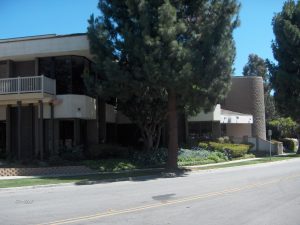
Also in this issue of Network News:
Making Policy Work for Rural Communities: The Value of Community Voice
Rural Community Assistance Corporation, a member of Partners for Rural Transformation, a coalition of six regional community development financial institutions, joined Hope Credit Union to coproduce Making Policy Work for Rural Communities: The Value of Community Voice, one of a series of articles for Nonprofit Quarterly.
You can find the whole series here: Eradicating Rural Poverty: The Power of Cooperation
Read the full article on Nonprofit Quarterly
2023 RuralRISE Summit
RuralRISE is excited to announce that the next in-person summit will be held in Waterville and Skowhegan, Maine. The event – originally scheduled for June – has been postponed, but new dates will be announced soon! If you’d like to explore the schedule originally set for the June event, get more details, and see this year’s sponsors, visit the RuralRISE Summit website. If you have questions, please contact connect@ruralrise.org.
